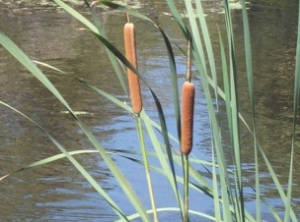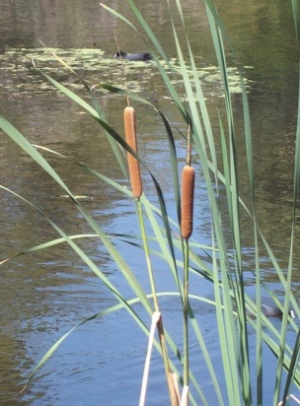
ALVIN JOHNSON looks at where the “suph” or cattail appears in the Bible…
The suph is translated as both ‘reed’ and ‘rush’ in the New International Version of the Bible. In the King James Version it is translated as ‘flag’. It is thought that the suph is the cattail (Typha domingensis).
The cattail (Typha domingensis) is a perennial plant which is found in both temperate and tropical regions throughout the world. It grows to about two metres in height. Its leaves are alternate (as opposed to being opposite each other along the stem) and it has separate male and female flowers. The term cattail actually is applied to the Typha species of which there are about 30 varieties.

The suph or cattail.
Moses was hidden among the suph on the banks of the Nile:
“Now a man of the house of Levi married a Levite woman, and she became pregnant and gave birth to a son. When she saw that he was a fine child, she hid him for three months. But when she could hide him no longer, she got a papyrus (gome) basket for him and coated it with tar and pitch. Then she placed the child in it and put it among the suph (reeds) along the bank of the Nile. His sister stood at a distance to see what would happen to him.
“Then Pharaoh’s daughter went down to the Nile to bathe, and her attendants were walking along the river bank. She saw the basket among the suph [reeds] and sent her slave girl to get it. She opened it and saw the baby. He was crying, and she felt sorry for him. ‘This is one of the Hebrew babies,’ she said.
“Then his sister asked Pharaoh’s daughter, ‘Shall I go and get one of the Hebrew women to nurse the baby for you?’
“’Yes, go,’ she answered. And the girl went and got the baby’s mother. Pharaoh’s daughter said to her, ‘Take this baby and nurse him for me, and I will pay you.’ So the woman took the baby and nursed him. When the child grew older, she took him to Pharaoh’s daughter and he became her son. She named him Moses, saying, ‘I drew him out of the water.'”
– Exodus 2:1-10.
It also should be pointed out that the Israelites did not pass through the ‘Red Sea’. Rather it was in Hebrew the Yam Suph, which literally means the ‘Sea of Reeds’. This gives a hint that it was a fresh-water lake rather than the salt water of the ocean, as the cattail is found only around fresh water.
In Isaiah there is a prophecy against Egypt where the suph will “wither”:
The waters of the river will dry up,
and the riverbed will be parched and dry.
The canals will stink;
the streams of Egypt will dwindle and dry up.
The reeds (qaneh) and suph (rushes) will wither,
also the plants along the Nile,
at the mouth of the river.
Every sown field along the Nile
will become parched, will blow away and be no more.
– Isaiah 19:6
This is an edited excerpt from Alvin Johnson’s iBook ‘Biblical Flora’, 2017. The book is available for free download on iTunes. A teacher’s edition is also available for purchase.





